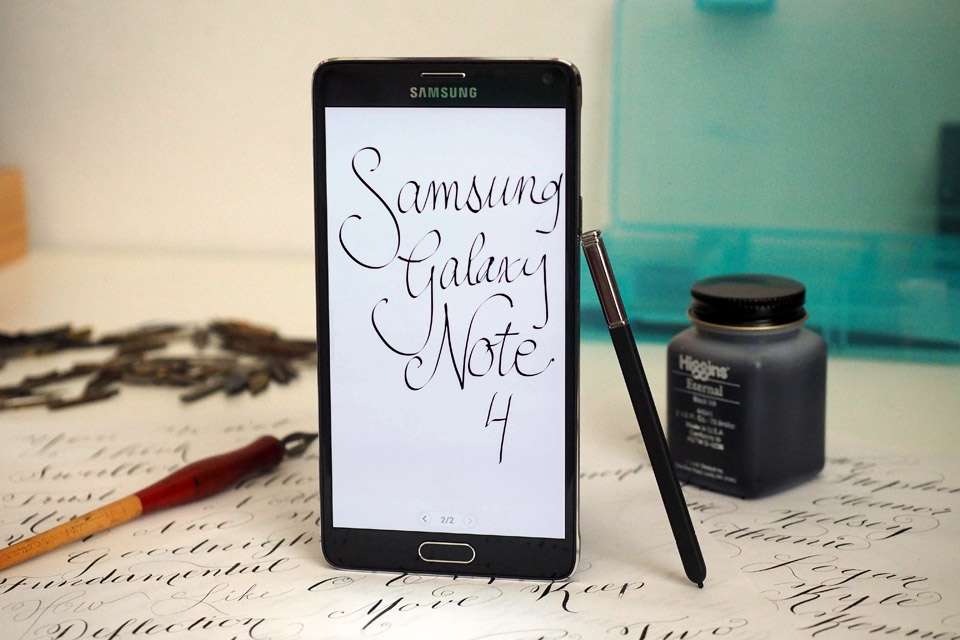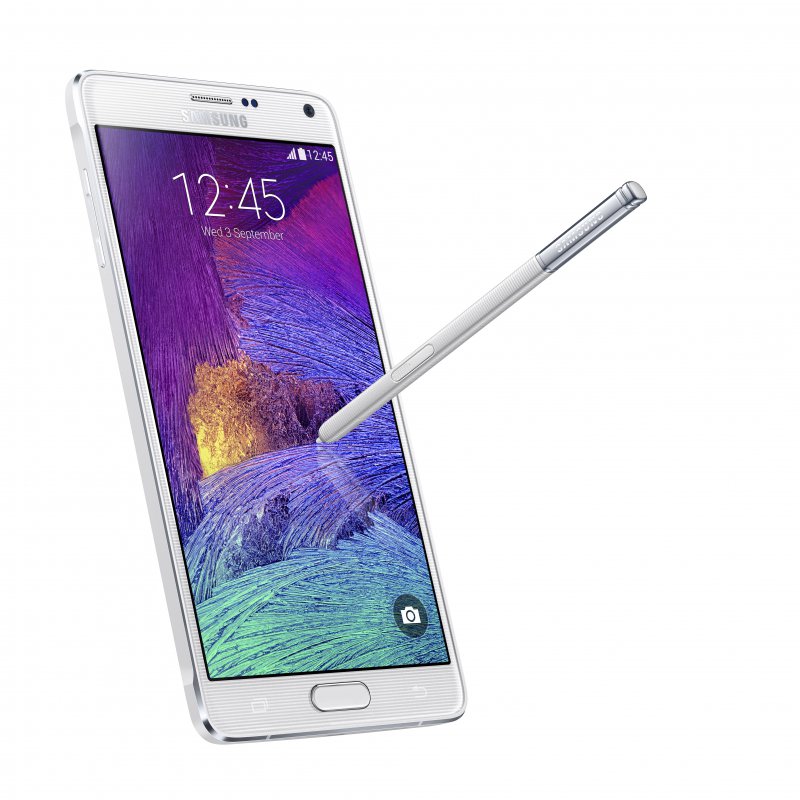What began in 2011 as a brand-new phone category has flourished into one of the most popular in the world. Smartphones with big screens (phablets, to some) are now ubiquitous, but it all started with an odd device called the Samsung Galaxy Note. At 5.3 inches, it was a behemoth for its day -- and yet, it sold like hotcakes thanks to its unique S Pen stylus, which provided users with extra functionality, and a copious amount of screen space.
Four iterations later, the Note series has continued to grow, mature and dominate the genre. Not only does the latest version, the Galaxy Note 4, come with the snazziest spec sheet on the market, but it also ushers in a fantastic new direction in Samsung's design. It sure sounds like an improvement over last year's model, and it is. Now that Apple's ready to tackle the Note with a large-screen phone of its own, however, is Samsung's baby still the best in its class?

Hardware
In my review of the Galaxy Alpha, I declared it was the most beautiful Samsung phone I'd ever seen. Thanks to the company's love of consistency, the Note 4 uses the same overall design and is just as aesthetically appealing as its smaller sibling. Its predecessor, last year's Note 3, was a big step in the right direction, featuring a bigger screen and fashionable leather-like back. But it wasn't enough. The ribbed chrome sides, the pointless stitches and the larger-than-life connector port at the bottom made it look cheaper than it needed to be. The Note 4 resolves those problems with aluminum sides, chamfered edges and smooth curves, and has a much more elegant appearance as a result.
Only the sides and edges of the Note 4 are aluminum, while the remainder of the phone is built with polycarbonate. And that's OK. Samsung's been opposed to using metal of any kind in its phones for years, and building a device with aluminum on the sides and plastic on the back is a solid compromise that makes it plenty durable. After all, most all-metal phones don't come with removable backs, and that's one of Samsung's biggest strengths; for as long as I can remember, the company has allowed users to swap batteries and add external storage via microSD slots underneath the back cover. Now you can have the best of both worlds.

Fortunately, Samsung pulled off this new design without adding much bulk. It's 2.3mm taller, 0.6mm narrower and 0.2mm thicker than the Note 3 and, at 176 grams, it's also 8g heavier. Slightly noticeable when the two devices are compared side by side, perhaps, but otherwise a wash when it comes to the in-hand experience; I probably wouldn't be able to pick out which one was which if I were blindfolded.
The Note 4 isn't the most comfortable large-screened phone to hold with one hand, but it comes in second place. That title rests with the LG G3, a 5.5-inch device with an arched back and thin sides that help it rest naturally in my hand -- it doesn't feel as large as it really is. That said, the new Note has an even bigger screen and I can still hold the device without hand fatigue (in which my hand gets tired after holding the phone for a while) or accidentally dropping it. I can't say the same about the Note's new competitor, the 5.5-inch iPhone 6 Plus; with a large bezel, rounded sides and a slippery aluminum build, it's tougher to hang onto with one hand than the Note. The only drawback to holding Samsung's new device is the edges, which feel a tad sharper when I wrap my fingers around them.

Of course, it's still big. Not everyone will like the fit and feel, simply because it is indeed a large handset. There's not much Samsung can do to remedy that, although it manages to trim down the Note's width with each new iteration. But for what it is, the product is reasonably sized.
On the front, there's an LED indicator on the top left, proximity sensors next to the earpiece in the top center and a 3.7-megapixel selfie cam placed in the top right. You'll also get a home button doubling as a fingerprint sensor, which is very easy to press because it's slightly raised above the glass; this is flanked by two capacitive keys (recent apps and back).
Just like the sides they're affixed to, the volume and power buttons (on the left and right sides, respectively) are also fashioned out of aluminum, and match up with the industrial design very well -- plastic buttons would've looked awfully out of place. The 3.5mm headphone jack and IR sensor (for remote control functionality) are on the top, and a micro-USB port sits in the middle of the bottom side, while the S Pen holster rests closer to the corner. Curiously, the micro-USB connector is 2.0, which is technically a step down from the 3.0 socket found on the Note 3. While this means your data transfers won't be as fast via cable, it also looks a lot cleaner; the port on the Note 3 was bigger, unsightly, took up too much space and, let's face it, was never used to its full potential. It feels odd to say, but this is one time I'm happy to see Samsung go back to an older protocol. Unfortunately, the fact that the port is open, rather than sealed shut like it is on the Galaxy S5, shows that the Note 4 is not waterproof.
Display
Samsung dabbled with a Quad HD display on a Korean version of the Galaxy S5, and now it's ready to bring larger panels with the same resolution into full production on the Note 4. This means you'll get to enjoy a resolution of 2,560 x 1,440 on a 5.7-inch Super AMOLED screen, equaling 515 ppi in pixel density. Obviously, it's a much higher number than the Note's 386 ppi, 1080p display. It's hard to say no to more pixels, especially on such a large device, but you're not missing out on a vastly improved viewing experience if you don't get the new phone -- the old Note's screen was quite lovely already, after all. The Note 4 panel is subtly better, with slightly crisper text and sharper image quality, but again, you're not going to notice a drastic improvement over the last version unless you're looking at them side by side (which, let's face it, rarely happens).

S Pen experience
What's a Note without an active stylus? The brand is synonymous with its S Pen in the same way peanut butter goes with jelly. It's arguably what helps the Note 4 stand out from its numerous competitors; very few companies have adopted the use of a stylus of any sort, let alone an active one that responds to changes in pressure, doubles as a desktop-like cursor and comes with an action button that offers additional features. To Samsung, it's not just about the extra real estate -- it's what you do with it that matters, and the S Pen gives the flagship a solid boost in productivity that's tough to duplicate anywhere else.
Just like every other S Pen, the version included here is molded slightly differently than its counterparts, but it's about the same length and width as last year's pen and retains its elliptical shape. This model has ridges that provide a better grip for your hand, and the button is flush with the rest of the pen, making it just as difficult to press as ever. I often had to turn the pen around because it's almost impossible to tell which side is which when I'm not looking. It's easy to take out of its built-in holster on the bottom of the Note, thanks to a large gap at the base of the pen, where I can place my fingernail and simply pull down.

No comments:
Post a Comment